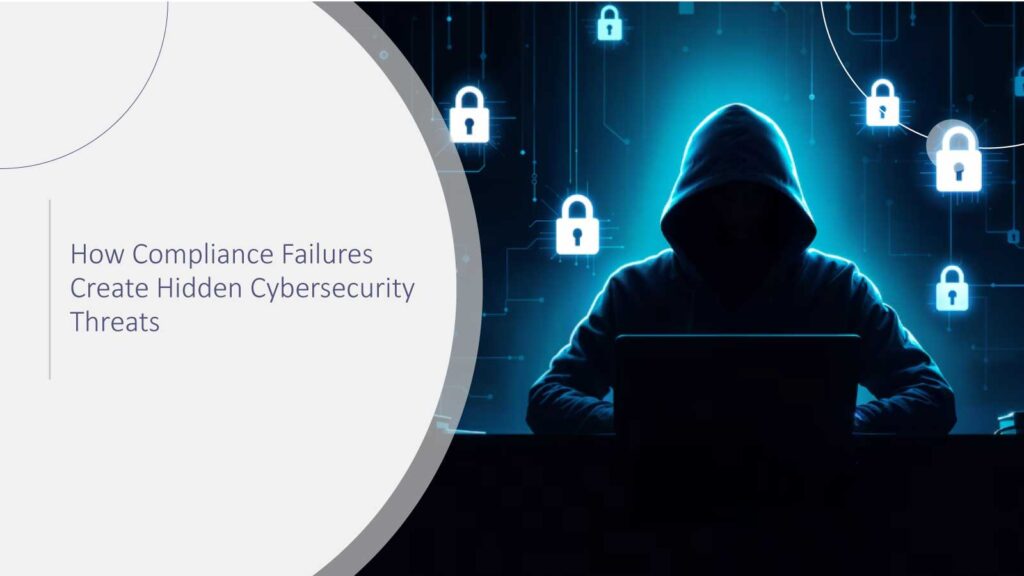When we think of cybersecurity Threats, the image that typically comes to mind is a hacker breaking through firewalls or a phishing email triggering a ransomware attack. But in reality, some of the biggest threats to an organization’s security posture stem not from outside intruders, but from within, from non-compliance with regulatory requirements.
Across highly regulated industries like construction, finance, and healthcare, companies have traditionally viewed compliance as a box-checking exercise. Yet as the digital ecosystem grows increasingly complex, compliance failures now act as doorways to far more dangerous cyber threats. They open up systems to financial fraud, unauthorized data access, insider threats, and long-term reputational damage.
The Real Cost of Compliance Gaps
Take the construction sector, for example. A recent analysis revealed that over $1 billion in IRS penalties have already been issued due to gaps in 1099 filing and outdated accounts payable (AP) workflows. While these fines are a serious business concern, the greater threat lies in the digital trail they expose.
In these scenarios, manual processes like shared spreadsheets, outdated ERP systems, and disconnected databases can create ungoverned environments where sensitive vendor information and payment data are exchanged without proper encryption, version control, or audit visibility. This lack of operational discipline is a fertile ground for cyber intrusions and compliance failure.
Even more concerning, organizations that incur these penalties are often unaware that their underlying digital infrastructure is compromised until after the fact. What appears to be a tax filing error might also reflect much deeper systemic issues in data security, user access control, and transactional transparency.
How Compliance Failures Escalate into Security Risks
Non-compliance and cybersecurity might seem like separate disciplines, but they intertwine deeply. Here are a few ways how gaps in compliance can morph into full-blown security threats:
Inadequate Vendor Management:
Failure to follow proper onboarding and verification processes for contractors and third-party vendors can result in unverified access, data mishandling, shadow IT, and increased vulnerability to business email compromise (BEC) attacks.
Manual Workflows:
In compliance-heavy sectors, businesses still surprisingly use spreadsheets, unsecured email chains, and handwritten invoices. These analog methods are difficult to monitor, easy to spoof, and impossible to secure effectively. They lack encryption, authentication, and visibility.
Lack of Automation and Monitoring:
Without digital workflow automation, anomalies in data entry or process execution go unnoticed. For example, a missing 1099 form could signify a fraudulent contractor profile or even insider collusion if not caught in real-time.
Data Silos and Integration Failures:
When compliance data lives separately from security monitoring tools or centralized ERP systems, crucial red flags go attention. IT and compliance teams need shared data access and holistic visibility to spot hybrid threats.
Outdated or Incomplete Audit Trails:
Regulators and cyber insurers alike now demand clear, immutable records of digital activity. If your compliance systems cannot generate or retain detailed logs, you may find yourself unable to prove innocence or take corrective action during an audit or investigation.
Why the Construction Industry Is Especially at Risk
The construction industry inherently decentralizes its operational ecosystem. Projects span multiple states or countries, involve a rotating pool of subcontractors, and often rely on legacy AP systems never designed with digital security in mind. As a result:
- Vendor and contractor onboarding is inconsistent.
- Payment approvals lack robust oversight.
- Data is exchanged across various unsecured communication channels (email, messaging apps, etc.).
- There is minimal integration between AP, HR, and IT security systems.
This fragmented structure makes it difficult to enforce compliance and even harder to trace security breaches. It also means a single point of failure, like an unauthorized invoice or missed 1099 filing, can have cascading consequences.
Compliance as a Security Strategy: Bridging the Gap
If organizations want to stay ahead of both regulatory penalties and cyberattacks, they need to stop treating compliance and security as separate disciplines. Instead, they should align both around a single digital risk strategy. Here’s how:
- Automate 1099 and AP Processes: Introduce secure digital workflows with role-based access, encryption, automated notifications, and digital audit trails. Tools like Zenwork’s Tax1099 platform exemplify how automation can help ensure accuracy, timeliness, and governance.
- Implement Vendor Access Controls: Every contractor or vendor should be onboarded through a centralized identity and access management (IAM) system. Use Zero Trust principles to verify, monitor, and restrict access based on risk level.
- Cross-Functional Accountability: Break silos between finance, security, and compliance departments. Develop a shared accountability model that reviews compliance gaps not just for audit risk but also for exposure to potential security breaches.
- Conduct Regular Risk Assessments: Periodic reviews of AP workflows and vendor management systems can help identify weak links. Simulate real-world attack scenarios to test system resilience.
- Invest in Secure Integration Platforms: Rather than adding tools on top of legacy systems, organizations should invest in unified platforms that seamlessly connect compliance, AP, finance, and security functions. This reduces blind spots and simplifies oversight.
Conclusion: Compliance Is Now a Cybersecurity Frontier
In today’s hyper-connected business environment, compliance is no longer just about avoiding fines. It is a foundational layer of enterprise cybersecurity. Every compliance breakdown has the potential to become a breach point. Every missed tax document, delayed contractor verification, or outdated AP process signals that something larger may be wrong.
Organizations that recognize this convergence and take steps to unify their compliance and cybersecurity programs will not only avoid costly penalties but also build more resilient, audit-ready, and breach-resistant digital ecosystems.
FAQs
1. How can a missed 1099 form become a cybersecurity issue?
A missed 1099 form may indicate deeper problems, such as outdated AP workflows or a lack of identity verification, conditions that bad actors can exploit to impersonate vendors or reroute payments.
2. Why is compliance considered a weak point in many cybersecurity strategies?
Because compliance tasks often involve fragmented systems, manual inputs, and multiple stakeholders, they are vulnerable to oversight, errors, and process gaps, providing hackers with easy entry points.
3. What makes the construction industry uniquely vulnerable to these compliance-security overlaps?
Construction firms often manage decentralized teams, rotate vendors frequently, and use legacy systems with little integration, creating inconsistencies in access control, vendor verification, and audit readiness.
4. What’s the benefit of aligning AP workflows with cybersecurity protocols?
Secure AP workflows prevent unauthorized access to financial systems, reduce fraud risk, and ensure all activity is logged and auditable, helping meet both compliance and cybersecurity standards.
5. How can organizations start bridging the compliance and cybersecurity gap?
They should automate high-risk processes like tax filing and vendor onboarding, adopt Zero Trust access models, and ensure real-time visibility across departments using secure, integrated platforms.
Want to learn how your team can close the compliance-security gap before it becomes a $1B problem? Join this free webinar on June 25, hosted by Zenwork.


